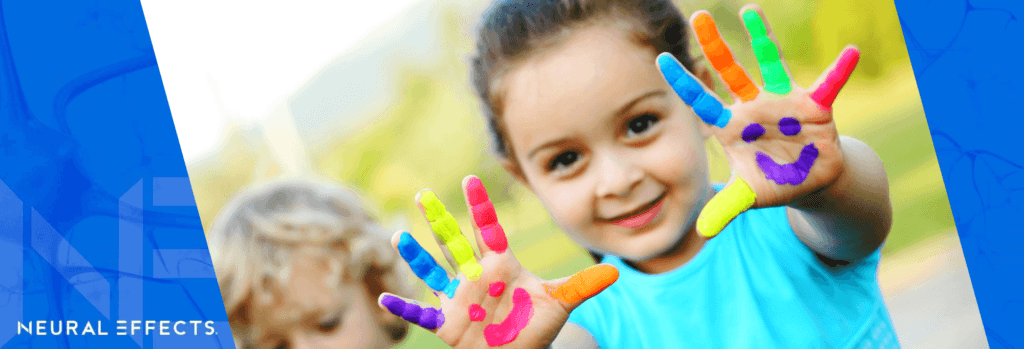You’ve probably heard that the best way to treat a concussion is to have your child rest in the dark until their symptoms disappear. While some children will recover regardless of what you do, this approach is not evidence based and may even inhibit your child’s recovery.
Modern research suggests that active rehabilitation can shorten patients’ recovery times and reduce the chance of long-term symptoms (post-concussion syndrome).
We wrote this article to walk you through what to do if you think your child may have a concussion, including:
- How to respond if your child just hit their head or you suspect they have a concussion, including when to go to the hospital, common symptoms to look for, how to avoid second impact syndrome, and how much your child can sleep after their injury.
- How to secure the best treatment for your child as they recover, along with how Neural Effects assesses and treats children with suspected head injury.
- What you can do at home to help your child recover, including whether they can use screens, how to approach homework, and activities you can do to help them recover.
- How to transition your child back into school and sports.
If you live in Provo, Salt Lake City, or anywhere else in the Utah valley area, we can help you recover from your concussion and reduce your chance of long-term symptoms. We are in network for most types of medical insurance. Schedule your evaluation today.
What to Do Immediately after Your Child Hurts Their Head
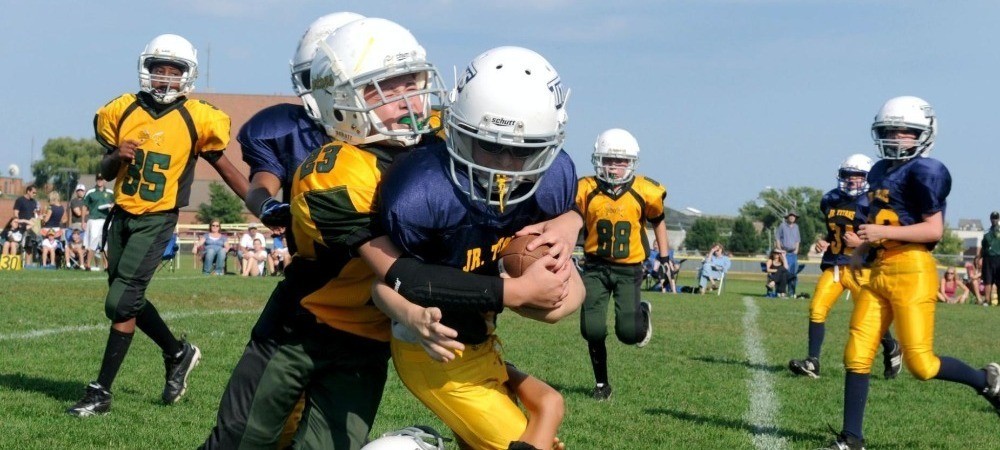
The first step is to determine whether your child should go to the emergency room. Seek immediate medical attention if you see any of these symptoms of traumatic brain injury (TBI):
- Blood or fluid in the ear.
- Increased drowsiness or lethargic behavior.
- Large bumps, bruises, or swelling on the head.
- Persistent vomiting.
- Seizures.
- Unequal pupil size.
- Worsening headaches or neck pain.
If you witnessed your child hit their head, then it’s typically a good idea to have a professional evaluate them. Preferably, you’ll get the opinion of a healthcare provider that specializes in mild traumatic brain injury, rather than someone with generalized knowledge like a primary care physician or a pediatrician. A professional concussion evaluation will involve a formalized assessment of symptoms and their severity and a determination of long-term risk factors such as any previous head injuries. It can also serve as a benchmark with which to gauge your child’s long-term recovery.
But if you feel that your child’s injury was mild or don’t want to go in to see a healthcare professional right away, then you should actively monitor their symptoms. The main symptoms to watch for include memory loss (which can take the form of your child repeating themselves), lingering and long-lasting headaches, changes and disturbances in vision, altered sleep patterns, emotional dysregulation, dizziness or imbalance, and sensitivity to light.
However, concussion symptoms can come in many forms. Some of these symptoms happen immediately, while others may not show up for a while. Here’s a thorough list from Cognitive FX that breaks down the symptoms of a concussion based on when they might appear:
Immediate Symptoms | Early or Delayed Symptoms |
|
|
Just one symptom can indicate a concussion. That said, the more symptoms your child has, the higher their chances of having a concussion.
While you’re monitoring your child’s symptoms, make sure they get some sleep. You may have heard that they shouldn’t sleep after their injury, but that’s not true. Children can sleep after their injury, but you need to ensure your child is actually sleeping and not losing consciousness. If there’s any doubt, go to the emergency department.
As you monitor your child’s symptoms and recovery, they can be as active as they want. But it’s critical they avoid contact sports or any activity that puts them at risk of another head injury. Second impact syndrome is a life-threatening condition that can occur if your child receives a second brain injury before recovering from the first. According to Dr. Bey and Dr. Ostick’s 2009 scientific review:
Second impact syndrome (SIS) causes diffuse cerebral swelling, brain herniation, and sometimes death can occur. SIS can occur with any two events involving head trauma. While rare, it is devastating in that young, healthy patients may die within a few minutes.
Though SIS is rare, it’s important to be aware of it. If your child is injured in a contact sport such as football, they need to get off the field immediately and begin their recovery. They should not be running around with other kids in the neighborhood or doing tricks on bikes, scooters, or hoverboards. These activities put them at a higher risk of concussion and brain damage.
But don’t let SIS discourage you from letting your child return to activities after their injury. In children, the likelihood of SIS decreases dramatically after 24-48 hours of the initial head injury. Light, supervised exercise is actually good for them. As you’ll learn in the next section, activity helps speed up your child’s recovery. Both mental and physical activity can be part of a treatment program that speeds up your child’s recovery and reduces their chances of developing long term symptoms.
Finding a Treatment Provider: Not All Concussion Treatment Is the Same
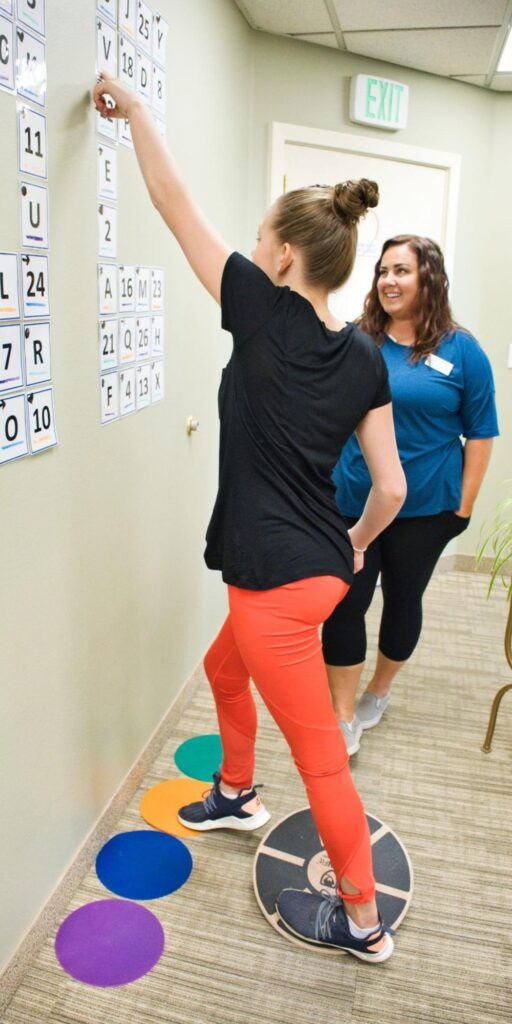
Unfortunately, effective concussion treatment and medical advice is harder to find than you might expect. That’s because the most recent concussion recovery research has not yet made it into mainstream medicine, and Pediatrics is no exception. In this section, we’ll discuss the traditional approach to treating concussions and why this is not in your child’s best interest. We’ll then describe the recommended active concussion recovery approach and its advantages.
Traditional Medicine Is Failing Children with Concussions
If you take your child to their pediatrician or primary care provider, there’s a high chance your child’s doctor will advise that your child rest until their symptoms go away.
Unfortunately, with this approach, 15-30% of children with a concussion develop long-term symptoms. That’s because this “wait and see” approach, often referred to as cocooning, isn’t actually treatment. It’s simply crossing your fingers and hoping for the best.
If we think of the brain as a muscle weakened by its traumatic injury, cocooning isn’t going to help it get any stronger and recover. The brain needs exercise to get strong again. Using your brain brings an influx of blood flow (oxygen) that will help impacted neural pathways recover. This is the premise of active concussion treatment.
Active Treatment Relies on the Latest Research for Better Outcomes
Concussions cause bruising and inflammation in your brain. This interferes with the brain’s neurovascular coupling, which is the relationship between neurons and the blood vessels that supply them with oxygen and other nutrients as needed.
The result is that some brain regions don’t engage when they should, and some regions do too much — either because they use too many resources for the job or they take on a larger share of the brain’s tasks than they should to make up for underperforming brain regions. These hyperactive and hypoactive brain regions are behind many concussion symptoms.
You can encourage healthy neurovascular coupling — and thus restored brain function — via exercises that activate multiple parts of the brain. This is the basis of active therapy for concussion. Active therapy is much more intentional and proactive than the passive wait-and-see approach. And that’s why it improves your child’s chances of a complete and speedy recovery.
But what does active concussion recovery therapy look like in practice? Here’s how we approach active treatment at our clinic for acute concussion diagnosis and treatment, Neural Effects.
Neural Effects Offers Active Treatment for Patients of All Ages
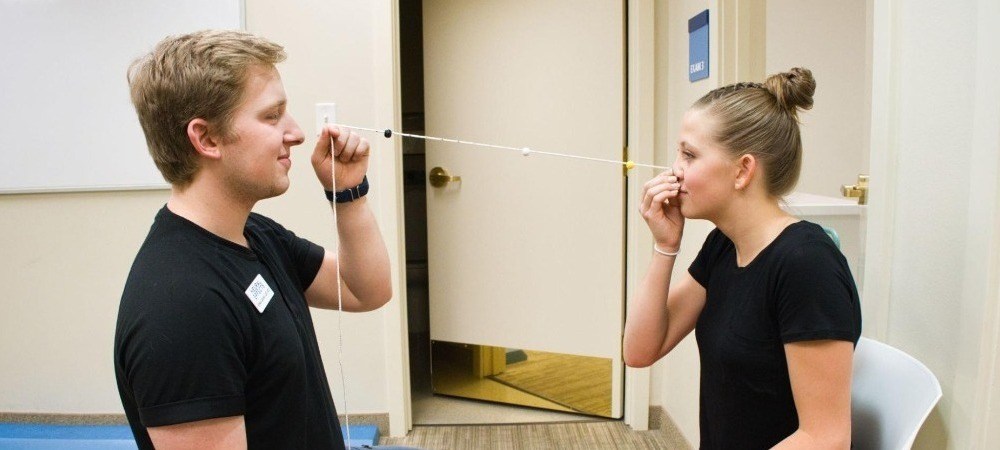
Neural Effects is a concussion clinic directed by a multidisciplinary team of concussion specialists with years of research and clinical experience. In this section, we’ll discuss what you can expect when you bring your child into Neural Effects for diagnosis and treatment.
Neural Effects’ Concussion Assessment
The first stage of any concussion treatment is assessing the severity of the concussion. While this process is standardized for adults, the concussion assessment will vary for children depending on their age:
- Children over eight receive Neural Effects’ full assessment. We test factors like balance and coordination to gauge the severity of the brain injury. In this initial assessment, therapists will assess your child’s symptoms using a post-concussion symptom scale, perform a nerve and spinal exam, conduct a balance assessment, and review your child’s complete medical history including any medical imaging such as MRIs, CT scans, and X-Rays. You can learn more about the complete assessment process here.
- For children under the age of eight, the concussion assessment will depend more heavily on a conversation with the parents to identify any behavioral changes that could stem from the head injury.
- In infants, our team will look for bleeding between sutures in the skull or any other sign of serious trauma.
Since the latest science shows improved outcomes when active treatment begins as soon as 24 hours after the injury, the Neural Effects staff will often begin active treatment immediately after the initial concussion assessment. The following section explains the type of therapy your child could receive and why it helps in their recovery.
Neural Effects’ Active Treatment Program
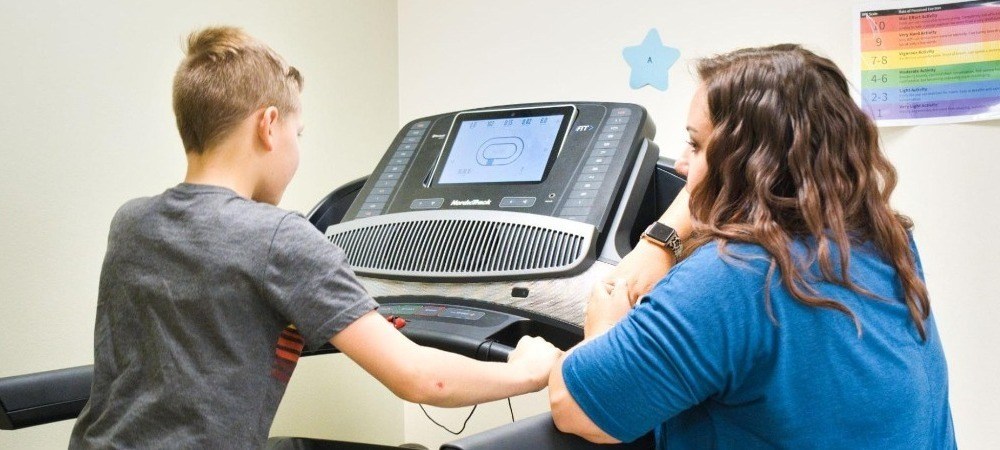
A typical concussion treatment plan includes three sessions a week for two weeks. That said, each child’s treatment plan is based on their needs; some need more sessions, and some need fewer. Your child will receive as much support as they need for a full recovery.
All therapy sessions begin and end with a post-concussion symptom scale assessment, which helps us track their improvement over time. Below are the three core areas that the Neural Effects treatment program covers:
Cardio and Breathing Techniques
Gentle cardio and breathing techniques increase blood flow in the brain, bringing more oxygen and other nutrients to speed the recovery process. Our therapists will guide your child through sub-symptom threshold exercise (i.e., exercise that does not cause their symptoms to skyrocket) and breathing exercises that strengthen the connection between the brain and the autonomic nervous system.
Vestibular and Ocular Therapy
Vision-related concussion symptoms, such as blurry or double vision, are often caused by dysfunction in the muscles and nerves around the eye or dysfunction in the areas of the brain that process visual input. Exercises designed to strengthen and retrain the muscles around the eyes (and strengthen their connection to the brain) can restore proper function and alleviate vision-related symptoms.
Symptoms such as balance problems, dizziness, nausea, vertigo, and headaches result from a dysregulation in the vestibular system (the system commonly referred to as the “inner ear,” which controls our balance and the perception of our body’s position in space). We use exercises designed to get the eye, brain, and vestibular systems synchronized again. Once these systems have healthy communication, many symptoms go away.
Cognitive and Neuromuscular Therapy
Neuromuscular therapy challenges the brain and the body at the same time. It’s an effective way to (gently) push the brain regions impacted by concussion to start working normally. Here are a couple of example exercises:
- Balancing on a Bosu ball while playing a memory word game.
- Throwing color-coded balls back and forth while thinking of a word for each letter of the alphabet (but always within a category — for example, names of cities or types of animals).
Your child’s therapist may also do cognitive exercises without the balancing component. Cognitive therapy can include tasks such as memorizing pictures, solving a logic puzzle, recognizing patterns, and more.
Age-Appropriate Treatment
Many of these treatments are not suitable for infants and very young children. But in our experience, children five years and older benefit from our active treatment program.
For infants and children under five, we support parents with educational resources and by providing guidance where needed.
How to Help Your Child Recover at Home
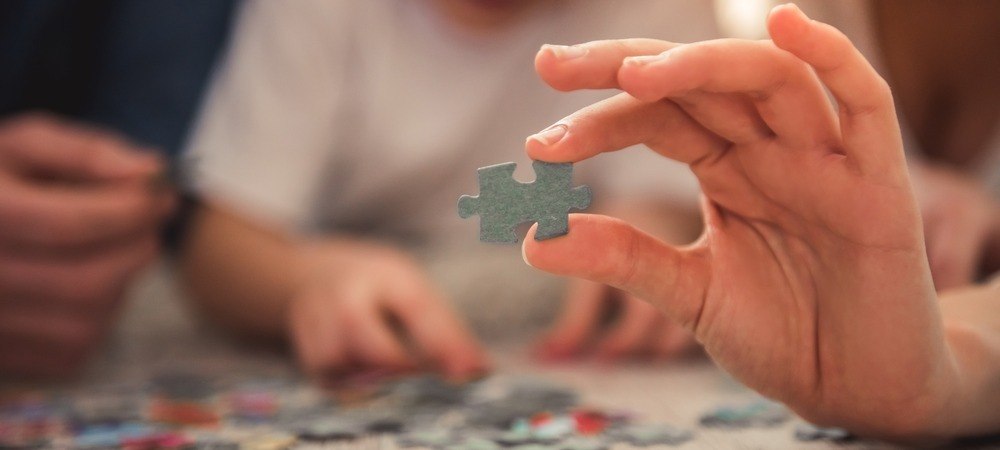
There are many ways to help your child recover. Before we explain them, it’s helpful first for you to understand that your child’s brain will have a stimulation threshold. This is the level of mental and physical activity at which their symptoms will flare up and increase in severity. A flare up can take many forms. Your child might suddenly experience a severe headache or bout of dizziness. They may suddenly become irritable.
Every child’s threshold level is different, but you’ll know that they’ve crossed their threshold when their symptoms start rapidly increasing. It’s important to challenge the brain during recovery, but the goal is to stop challenging it before your child crosses their threshold and their symptoms increase.
Keeping that in mind, here’s what you need to know about at-home recovery.
Screens Aren’t the Problem — Stimulation Is
Screens aren’t automatically bad during concussion recovery. In fact, we encourage parents to let their children spend some time playing video games or watching TV. The key is knowing when it’s time to stop.
Processing visual information requires a lot of brain power and can cause your child to surpass their threshold quickly. Roughly 70% of the brain processes what the eyes do, so staring at a screen is a major cognitive workout.
Once your child’s stimulation threshold is crossed, you may notice them become irritable or complain of symptoms like headaches. These are indications that your child has passed their stimulation threshold. If this occurs, they should go into a dark and quiet space to recover.
Until you have an idea of your child’s threshold, it’s best to start slow with anything that can be overwhelming, such as loud noises, large crowds, and any other forms of stimulation. Eventually you’ll develop a good sense of how much stimulation they can handle.
Takeaways
- Limit screen time, but don’t restrict it completely.
- Limit exposure to loud noises and bright lights.
- If your child’s symptoms increase after stimulation, get them to a dark, quiet space to recover.
Start Slow with Exercise (but Don’t Avoid It)
Exercise increases oxygen flow to the brain. This oxygen is essential for the recovery process.
Some children will naturally prefer to lay in bed all day as they recover. If this describes your child, encourage them to exercise by going outside for a walk. If this causes their symptoms to flare up, then at least have them walk up and down the stairs a couple times to begin increasing their threshold.
Feeling extra tired after exercise is normal, so don’t let this alarm you. This is part of the recovery process. Just make sure they’re not exceeding their symptom threshold or in danger of another head injury.
Takeaways
- Let your child be as active as they want (under supervision).
- If your child just wants to sleep, encourage them to walk outside.
- Feeling extra tired is normal.
- Avoid activities that can cause another head injury.
Challenge the Brain with Games, Puzzles, and Homework
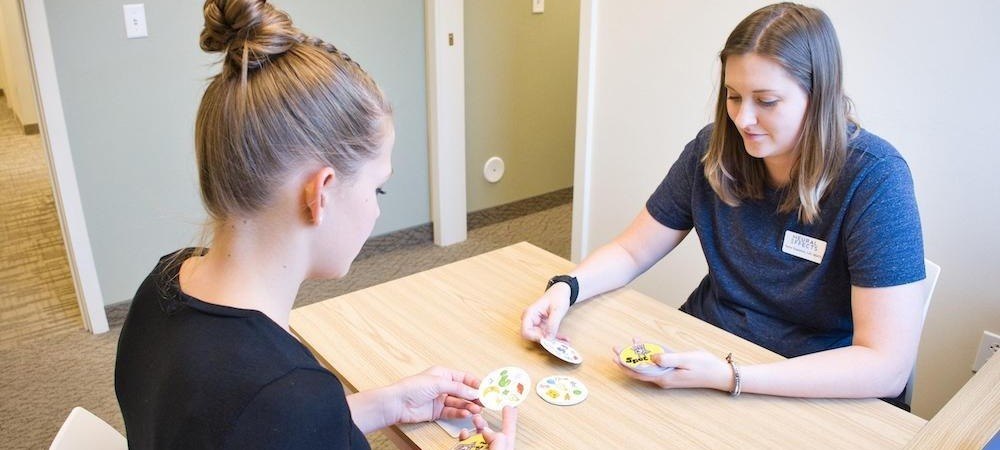
Cognitive effort increases blood flow to the brain and begins using pathways that may have been negatively impacted by concussion. Exercising the brain with complex challenges helps it recuperate.
Brain exercises can range from school work to strategy board games. Board games, mazes, crossword puzzles, and sudoku are all good options, but you can find a complete list here. Limited but gradually increasing school attendance can help, too.
These types of cognitive exercises will tax the brain, so carefully monitor your child’s behavior to make sure they are not crossing their threshold. If your child’s symptoms get worse, they need to stop and recover. The goal is to get close to the threshold without exceeding it. They may need extra time to complete school assignments, and that’s perfectly normal.
Takeaways
- School work can be a part of the recovery process.
- Brain games and puzzles are good for your child’s recovery.
Visual Games Repair Visual Dysfunction
After a head injury, your child might experience symptoms related to their vision because over half of the brain’s pathways are dedicated to vision and eye movement control. These vision problems can cause other concussion symptoms such as dizziness, balance issues, and headaches. Here are a few of the vision problems your child might experience:
- Blurry vision.
- Difficulty focusing.
- Difficulty reading.
- Light sensitivity.
- Problems with peripheral vision.
- Problems with visual perception.
Introducing games that offer a visual challenge is a good way to supplement vision therapy. Some examples of these sorts of games are jigsaw puzzles and “find the difference” games.
Takeaways
- Visual games like jigsaw puzzles and “find the difference” can supplement vision therapy.
A Healthy Diet Aids in Recovery
While your child’s body recovers from the brain injury, it needs raw materials to build healthy cells and tissue. These raw materials come from your child’s diet. By eating a balanced diet of whole foods rich in vitamins and minerals, your child’s body will have everything it needs to repair itself. We especially recommend foods like fish, avocado, nuts, fresh fruits and vegetables, and spices. These foods have the fatty acids and antioxidants the nervous system needs during recovery.
Takeaways
- A balanced diet provides the nutrients required for recovery.
How to Return to Normal
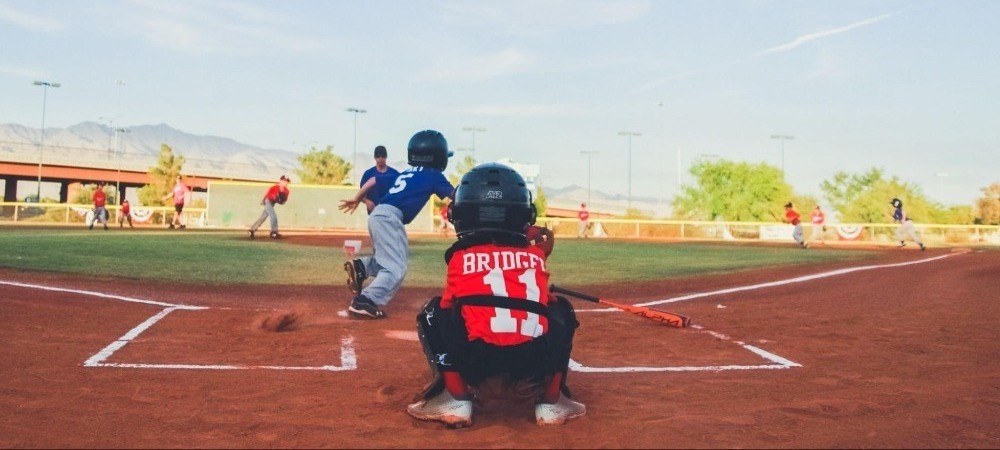
Active therapy speeds recovery and reduces the chances of any long-term symptoms. At some point, your child will be ready to return fully to all their normal activities. But when is your child “officially” recovered enough for their life (and yours) to go back to normal?
Have all the symptoms gone away? In some cases, symptoms last for longer than three months. If this is the case with your child, the diagnosis changes to post-concussion syndrome. Fortunately, this is treatable with active therapy as well. If left untreated, symptoms could last a lifetime.
But for the majority of children, especially if they’ve gone through active therapy, symptoms will go away long before three months. Children’s brains are remarkably resilient.
Your child will be able to go back to regular activities and school full time as soon as their cognitive threshold allows them to spend the full day in class. Depending on the severity of the initial head injury, this could take two weeks or over a month.
Getting clearance to go back to sports is a little more complex. There’s often paperwork involved. That’s because children are more likely to get injured in sports, and schools want to ensure safety while limiting liability. A professional is required to clear your child to return to play. They will be familiar with any paperwork involved in this process. For example, the staff at Neural Effects routinely completes Utah’s High School Athletic Association return-to-play paperwork for student athletes.
For more information about gradual return to play and children’s concussion, visit the Centers for Disease Control and Prevention (CDC) Heads UP policy page.
Conclusion
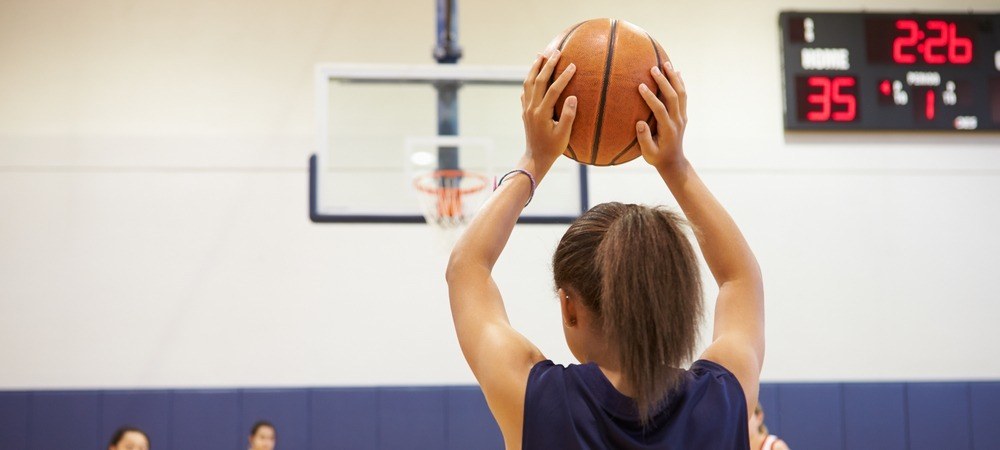
Neural Effects provides a complete active treatment program for patients of all ages. From the initial concussion assessment to the final return-to-play paperwork, the Neural Effects team provides a guided recovery process for every child.
All treatment happens in the Neural Effects facility (or remotely, for some therapies), so you don’t have to drive your child from one specialist to another. Because Neural Effects provides actual treatment beyond the traditional “wait and see” method, there is less chance of long term symptoms, and recovery times are faster.
If you live in Provo, Salt Lake City, or anywhere else in the Utah valley area, we can help you recover from your concussion and reduce your chance of long-term symptoms. We are in-network for most types of medical insurance. Schedule your evaluation today.
